-
 Bitcoin
Bitcoin $105,385.4541
0.55% -
 Ethereum
Ethereum $2,537.5225
0.93% -
 Tether USDt
Tether USDt $1.0003
-0.02% -
 XRP
XRP $2.1601
0.92% -
 BNB
BNB $646.8156
0.36% -
 Solana
Solana $150.4487
4.30% -
 USDC
USDC $0.9999
0.00% -
 Dogecoin
Dogecoin $0.1759
-0.22% -
 TRON
TRON $0.2729
1.31% -
 Cardano
Cardano $0.6299
0.61% -
 Hyperliquid
Hyperliquid $40.6968
1.01% -
 Sui
Sui $3.0011
3.68% -
 Bitcoin Cash
Bitcoin Cash $459.2113
6.74% -
 Chainlink
Chainlink $13.1405
1.21% -
 UNUS SED LEO
UNUS SED LEO $9.1731
1.28% -
 Avalanche
Avalanche $19.0667
1.05% -
 Stellar
Stellar $0.2576
0.75% -
 Toncoin
Toncoin $2.9670
0.95% -
 Shiba Inu
Shiba Inu $0.0...01199
-0.13% -
 Litecoin
Litecoin $85.9529
1.13% -
 Hedera
Hedera $0.1542
-0.96% -
 Polkadot
Polkadot $3.7918
1.11% -
 Ethena USDe
Ethena USDe $1.0000
-0.03% -
 Monero
Monero $315.8141
0.84% -
 Dai
Dai $0.9998
-0.01% -
 Bitget Token
Bitget Token $4.5147
-0.55% -
 Pepe
Pepe $0.0...01115
2.24% -
 Uniswap
Uniswap $7.1330
-0.91% -
 Pi
Pi $0.6011
-1.51% -
 Aave
Aave $273.4436
0.48%
How long will it take for the gap to be filled? Which gaps must be filled?
Gaps in crypto trading signal potential support/resistance levels, with common and exhaustion gaps more likely to be filled depending on volume, volatility, and market sentiment.
Jun 15, 2025 at 11:14 am
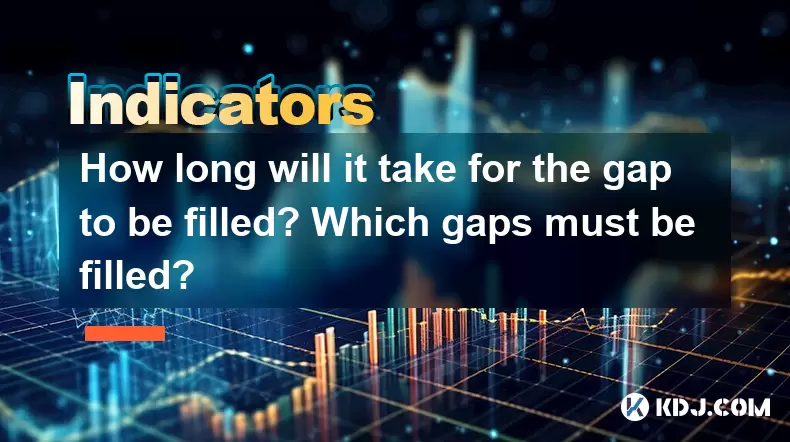
Understanding the Concept of Gaps in Cryptocurrency Trading
In the world of cryptocurrency trading, gaps refer to price levels at which no trading activity has occurred. These gaps appear on price charts when the price of an asset jumps from one level to another without any trades happening in between. This phenomenon is especially common in markets that operate 24/7, like crypto, due to sudden news events or changes in market sentiment during off-peak hours.
Gaps are significant because they often represent areas of strong support or resistance. Traders monitor these gaps to anticipate future price movements. When a gap is filled, it means the price has returned to the level where the gap initially formed, closing it visually on the chart.
How Long Will It Take for the Gap to Be Filled?
The time it takes for a gap to be filled depends heavily on several factors including market volatility, trading volume, and overall market sentiment. In highly volatile cryptocurrencies like Bitcoin (BTC) or Ethereum (ETH), gaps may close within hours if there's enough momentum pushing the price back to the original level.
However, for smaller-cap altcoins or during periods of low liquidity, gaps can remain unfilled for days or even weeks. There’s no fixed timeline, but historical data shows that most common gaps—those not associated with major news—are usually filled relatively quickly.
Traders should pay attention to volume patterns around the gap area. If high volume returns near the gap zone, it increases the likelihood of the gap being filled soon. Conversely, low volume suggests hesitation, and the gap may persist longer than expected.
Which Gaps Must Be Filled?
Not all gaps are created equal. Understanding which types of gaps are more likely to be filled helps traders make informed decisions. The main categories include:
- Common gaps: These occur frequently and are usually filled quickly as part of normal price movement.
- Breakaway gaps: These signal the start of a new trend and are less likely to be filled since they indicate strong directional movement.
- Runaway gaps: Also known as measuring gaps, these appear mid-trend and typically do not get filled unless the trend reverses significantly.
- Exhaustion gaps: These form near the end of a trend and are often followed by a reversal, making them more likely to be filled shortly after formation.
Among these, common gaps and exhaustion gaps have the highest probability of being filled. Recognizing which type you're dealing with requires analyzing candlestick patterns, volume, and trend strength.
Identifying Gaps on Price Charts
To spot a gap, traders must examine candlestick charts closely. A gap appears when the low of an upward candle is higher than the high of the previous candle, or vice versa for a downward gap.
Using tools such as TradingView or Binance's native charting platform, zoom into daily or hourly charts to detect these anomalies. Look for abrupt jumps in price with little or no wicks connecting the candles. Some platforms also offer built-in indicators that highlight gaps automatically.
It's essential to differentiate between real gaps and extended wicks. Real gaps occur when there's no overlap between the current candle and the prior one, while long wicks are just signs of temporary volatility and not actual gaps.
Strategies to Trade Gaps in Crypto Markets
Once a gap is identified, traders can develop strategies based on whether they expect it to be filled or not. Here’s how seasoned traders approach this:
- Gap-filling strategy: Enter a trade once the price approaches the gap zone. For example, if a bullish gap forms and the price pulls back toward it, some traders go long expecting the gap to hold as support.
- Gap continuation strategy: If a breakaway or runaway gap occurs, traders may follow the trend, anticipating further movement in the same direction.
- Volume confirmation: Always check volume levels before entering a trade. High volume near the gap zone confirms interest and increases the chance of fulfillment.
- Stop-loss placement: Place stop-loss orders just below the gap level in case of false signals or sudden reversals.
These strategies work best when combined with other technical indicators like moving averages, RSI, or Fibonacci retracements to confirm potential entries and exits.
Monitoring Market Conditions Around Gaps
Market conditions play a critical role in determining whether a gap will be filled. Key aspects to monitor include:
- News and announcements: Major regulatory updates, exchange listings, or macroeconomic developments can delay or accelerate gap fills.
- Liquidity levels: Low liquidity environments, such as weekends or holidays, may cause gaps to persist longer than usual.
- Market sentiment: Use sentiment analysis tools or social media tracking to gauge whether the community is bullish or bearish on a particular coin.
- Exchange-specific gaps: Sometimes, gaps only appear on certain exchanges due to low trading activity, so cross-check multiple platforms for accuracy.
By staying updated on these factors, traders can better assess the likelihood and timing of a gap being filled.
Frequently Asked Questions
What causes gaps to form in cryptocurrency charts?
Gaps form primarily due to sudden shifts in supply and demand, often triggered by news events, whale movements, or rapid changes in investor sentiment. Since crypto markets never close, unexpected events outside regular trading hours can lead to significant price jumps when the market reopens.
Can I rely solely on gap analysis for trading decisions?
While gap analysis is useful, it should not be used in isolation. Combining it with volume analysis, candlestick patterns, and broader market trends provides a more comprehensive view and reduces the risk of false signals.
Are gaps more common in certain cryptocurrencies?
Yes, highly volatile coins tend to exhibit more frequent and pronounced gaps compared to stablecoins or large-cap assets. Altcoins with lower liquidity are particularly prone to gapping due to thinner order books and sporadic trading activity.
Is every gap guaranteed to be filled eventually?
No, not all gaps get filled. Breakaway and runaway gaps, especially those driven by strong fundamentals or adoption news, may never be revisited by price. Exhaustion and common gaps, however, have a higher probability of closure.
Disclaimer:info@kdj.com
The information provided is not trading advice. kdj.com does not assume any responsibility for any investments made based on the information provided in this article. Cryptocurrencies are highly volatile and it is highly recommended that you invest with caution after thorough research!
If you believe that the content used on this website infringes your copyright, please contact us immediately (info@kdj.com) and we will delete it promptly.
- Solana (SOL) Price Prediction: $200 Soon? Experts Are Betting on Ruvi AI (RUVI) As Investors Enjoy 9,200% Potential
- 2025-06-16 00:45:12
- Fedrok AG is a Swiss blockchain company focused on combating climate change by transforming the carbon credit market.
- 2025-06-16 00:45:12
- NEXO Will Host an AMA on X on Crypto Taxation Featuring Representatives from Koinly
- 2025-06-16 00:40:15
- OGV to OGN Migration Process Will End on May 27th
- 2025-06-16 00:40:15
- Blockchain fintech firm Liquid Noble says it's working to improve the user experience for investors in tokenized precious metals
- 2025-06-16 00:35:12
- DIA will host an AMA on X with PeaPods Finance
- 2025-06-16 00:35:12
Related knowledge
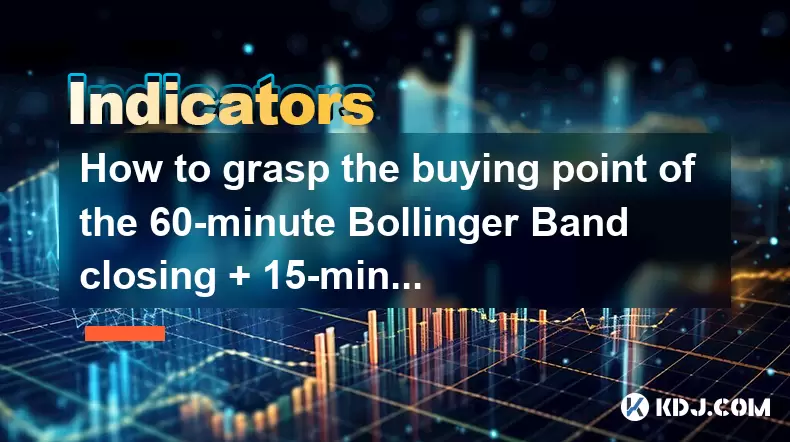
How to grasp the buying point of the 60-minute Bollinger Band closing + 15-minute MACD bottom divergence?
Jun 16,2025 at 12:03am
Understanding the Bollinger Band Closing Signal on a 60-Minute ChartThe Bollinger Band closing signal refers to a situation where the price closes outside the upper or lower band and then re-enters it in the subsequent candlestick. In this context, we focus on the lower Bollinger Band closing, which indicates a potential reversal from a downtrend. On th...
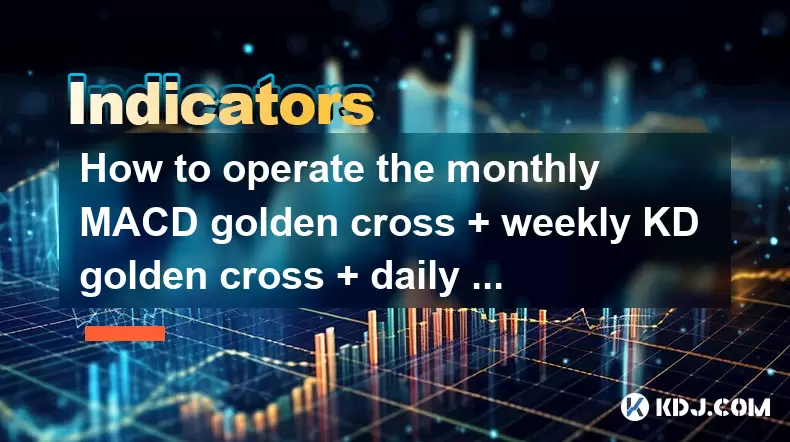
How to operate the monthly MACD golden cross + weekly KD golden cross + daily volume breakthrough?
Jun 15,2025 at 05:36am
Understanding the Strategy: Monthly MACD Golden CrossTo effectively operate the monthly MACD golden cross, traders must first understand what this signal entails. The MACD (Moving Average Convergence Divergence) golden cross occurs when the MACD line crosses above the signal line on a given chart timeframe. When this happens on the monthly chart, it sug...
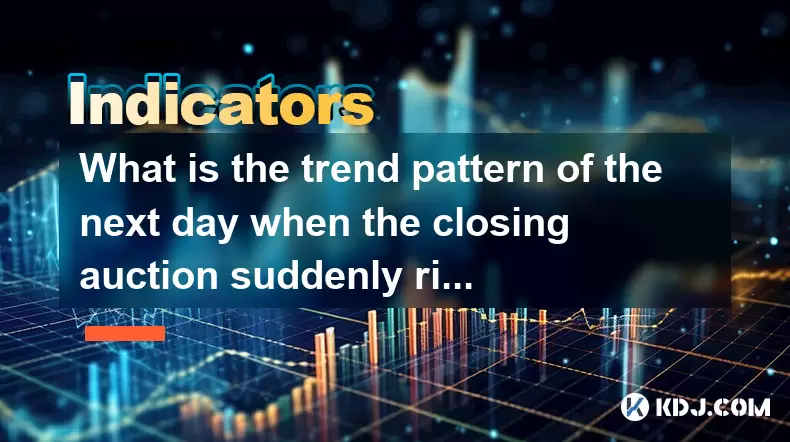
What is the trend pattern of the next day when the closing auction suddenly rises?
Jun 15,2025 at 08:15am
Understanding Closing Auctions in Cryptocurrency MarketsIn the context of cryptocurrency trading, a closing auction refers to a mechanism used by exchanges to determine the closing price of an asset at the end of a trading session. This process typically occurs within a short time window before the market closes for the day and aims to provide a fair an...

What does it mean when the volume fluctuates during the sideways trading at high levels?
Jun 15,2025 at 10:28am
Understanding Volume Fluctuations in Sideways TradingWhen volume fluctuates during sideways trading at high levels, it refers to the changes in the number of assets traded over a given period while the price remains relatively stable, moving within a defined range. This phenomenon typically occurs when the market lacks a clear directional bias—neither b...
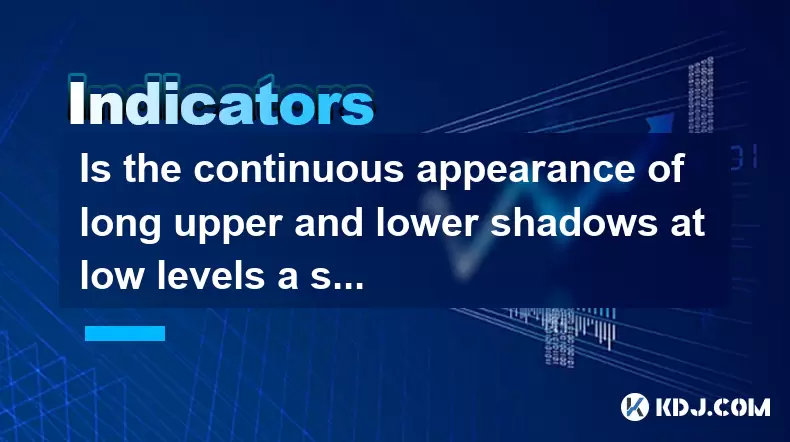
Is the continuous appearance of long upper and lower shadows at low levels a signal of accumulation?
Jun 15,2025 at 01:43am
Understanding Long Upper and Lower Shadows in Candlestick ChartsIn the world of cryptocurrency trading, candlestick patterns are widely used to analyze price movements. A long upper shadow, also known as a wick or tail, indicates that the price rose significantly during the period but was pushed back down by selling pressure. Conversely, a long lower sh...
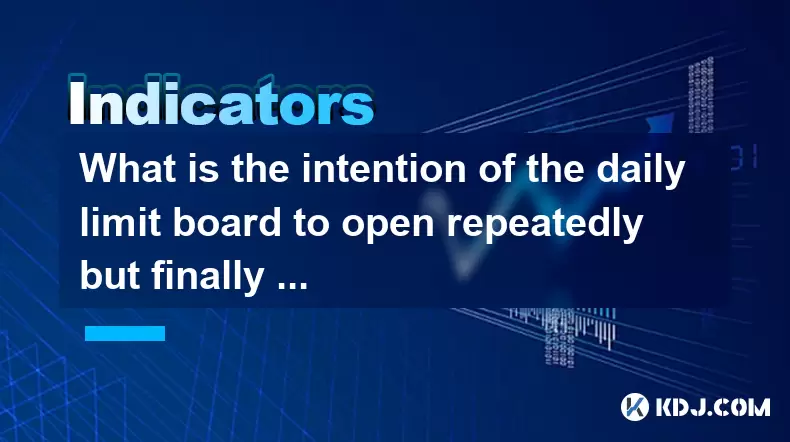
What is the intention of the daily limit board to open repeatedly but finally close?
Jun 15,2025 at 01:08am
Understanding the Daily Limit Board in Cryptocurrency TradingIn cryptocurrency trading, a daily limit board refers to a price movement restriction mechanism applied by certain exchanges or regulatory bodies. This mechanism is primarily used to prevent extreme volatility and panic selling or buying during periods of intense market fluctuation. When an as...

How to grasp the buying point of the 60-minute Bollinger Band closing + 15-minute MACD bottom divergence?
Jun 16,2025 at 12:03am
Understanding the Bollinger Band Closing Signal on a 60-Minute ChartThe Bollinger Band closing signal refers to a situation where the price closes outside the upper or lower band and then re-enters it in the subsequent candlestick. In this context, we focus on the lower Bollinger Band closing, which indicates a potential reversal from a downtrend. On th...

How to operate the monthly MACD golden cross + weekly KD golden cross + daily volume breakthrough?
Jun 15,2025 at 05:36am
Understanding the Strategy: Monthly MACD Golden CrossTo effectively operate the monthly MACD golden cross, traders must first understand what this signal entails. The MACD (Moving Average Convergence Divergence) golden cross occurs when the MACD line crosses above the signal line on a given chart timeframe. When this happens on the monthly chart, it sug...

What is the trend pattern of the next day when the closing auction suddenly rises?
Jun 15,2025 at 08:15am
Understanding Closing Auctions in Cryptocurrency MarketsIn the context of cryptocurrency trading, a closing auction refers to a mechanism used by exchanges to determine the closing price of an asset at the end of a trading session. This process typically occurs within a short time window before the market closes for the day and aims to provide a fair an...

What does it mean when the volume fluctuates during the sideways trading at high levels?
Jun 15,2025 at 10:28am
Understanding Volume Fluctuations in Sideways TradingWhen volume fluctuates during sideways trading at high levels, it refers to the changes in the number of assets traded over a given period while the price remains relatively stable, moving within a defined range. This phenomenon typically occurs when the market lacks a clear directional bias—neither b...

Is the continuous appearance of long upper and lower shadows at low levels a signal of accumulation?
Jun 15,2025 at 01:43am
Understanding Long Upper and Lower Shadows in Candlestick ChartsIn the world of cryptocurrency trading, candlestick patterns are widely used to analyze price movements. A long upper shadow, also known as a wick or tail, indicates that the price rose significantly during the period but was pushed back down by selling pressure. Conversely, a long lower sh...

What is the intention of the daily limit board to open repeatedly but finally close?
Jun 15,2025 at 01:08am
Understanding the Daily Limit Board in Cryptocurrency TradingIn cryptocurrency trading, a daily limit board refers to a price movement restriction mechanism applied by certain exchanges or regulatory bodies. This mechanism is primarily used to prevent extreme volatility and panic selling or buying during periods of intense market fluctuation. When an as...
See all articles

























































































